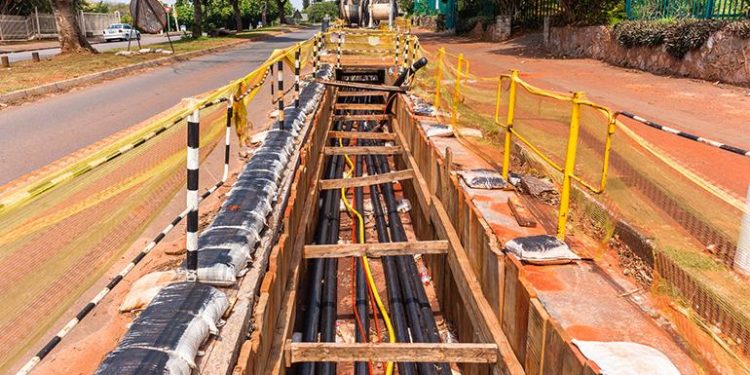Sambit Dash
One of the biggest casualties of Cyclone Fani, which battered Odisha, was electricity. Massive power infrastructure, including two lakh electrical poles, 84,000 kilometres of low-tension wire, 11,000 distribution transformers and four 132 KV grids were badly damaged in the very rare summer cyclone that plunged more than 25 lakh families into darkness for days, leading to weeks. This has kindled the debate on whether underground electrical cabling would have prevented such widespread damage. While there are plans afoot to take power infrastructure underground in Bhubaneswar and Cuttack, this policy decision should be considered with much caution.
If anything, burying power cables has been the aim of distribution companies in the recent past. According to a report in December 2016, Cuttack would go for underground cabling of 61 km and a sum of Rs142 crore was sanctioned for the first phase of work. Tamil Nadu Generation and Distribution Corporation (Tangedco) in 2017 decided to go for underground cabling in extended areas of Chennai Corporation at an estimated cost of Rs2,567 crore. In Bangalore, the Bangalore Electricity Supply Company Limited (Bescom) plans to lay 18,900 kilometres of underground power cables starting this year, at an estimated project cost of Rs4,500 crore.
Underground cabling work in Bhubaneswar started in 2016 and aims to bury 350 kilometres of cables transmitting electricity. The work implemented by Odisha Power Transmission Corporation Limited (OPTCL) and Central Electricity Supply Utility (CESU) has been allotted Rs1,500 crore for the first phase but the work has been hit by roadblocks such as lack of skilled manpower and stoppage of work for Hockey World Cup, among other things.
Prohibitive cost of underground cabling has been the primary concern in the US and European countries. Florida, after being hit by Hurricane Wilma in 2005, which caused 3-week long outage, spent $3 billion to upgrade its overhead system. Things got better for the next hurricane and power could be restored in a week’s time. In July 2012, when Washington DC was knocked by a storm, a similar debate raged; however, cost factor trumped the plan for an underground system. An analysis by the US Energy Information Administration found that the cost of underground cabling was 5-10 times per mile to that of overhead cabling. In San Francisco, in a 10-year project of burying 45.8 miles of overhead lines, the estimated cost of $1 million per mile ended up becoming $3.8 million per mile.
An analysis by the US Energy Information Administration found that the cost of underground cabling was 5-10 times per mile to that of overhead cabling. In San Francisco, in a 10-year project of burying 45.8 miles of overhead lines, the estimated cost of $1 million per mile ended up becoming $3.8 million per mile
The first major roadblock for underground cabling is that it is cost prohibitive. CESU, the distribution company for 19 per cent of Odisha, including Bhubaneswar and Cuttack, has a debt burden of more than Rs2,000 crore and aggregate and technical loss of a whopping 35 per cent. It is important to remember that the power sector contributes a large chunk to the Non-Performing Assets burden under which banks are collapsing. In a Parliamentary Standing Committee on Energy report last year, the probable figure was pegged at Rs1.47 lakh crore. Thus, we have to ask, who will pay for the massive investment that undergrounding will incur? Whether vegetation management, above-ground infrastructure upgradation, limited undergrounding can be a practical solution needs evaluation.
The second hindrance is ineffectiveness of underground cabling in case of flooding. As recently as July 2018, heavy rains caused flooding, to which Bhubaneswar is prone to, showing how things can quickly worsen in the capital city. Underground cabling is ineffective during flooding as pad-mounted transformers get damaged by floods.
The third issue is high cost of repairs from digging and poor accessibility. While one may narrow down the area of damage using sensors, digging and maintenance may cause increased outage time. While maintenance may be low in the initial decade, it can rise exponentially after that. Lifespan of underground cable, which require various types of casing and stringent specifications, is also low compared with overhead cables.
The fourth problem, typical to India, would be the issue of coordination. Since the average municipal corporation and development authorities in a city do not talk to each other, and the skills of the average worker is questionable, chances of damage while digging are high. Central government’s City Gas Distribution project covering 17 districts in Odisha is a case in point. The project is vying for the limited underground space, which already packed, adding to the complexity of digging and repair.
Underground cabling does offer advantages such as aesthetic appeal, lower risk of electrocution, low voltage drop, low chances of power theft. These, too, need to be factored in a detailed analysis before undertaking such high-cost projects. A World Bank report of December 2018 stated that India loses 4 per cent of its GDP owing to inefficiency in power distribution, and ranks 80 among 137 economies in “reliability of power supply”. India has the dubious distinction of losing 20 per cent of electricity in transmission and distribution, the highest in the world, and a lot of it can be addressed by way of underground cabling. However, for reasons stated above, underground power infrastructure has been an exception and is not the rule in most cities. Planners need to analyse the matter well before they get cities to ride the underground power cabling juggernaut.
The writer is a senior-grade lecturer, Department of Biochemistry, at Melaka Manipal Medical College (Manipal Campus).







































